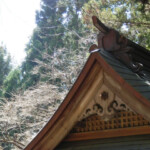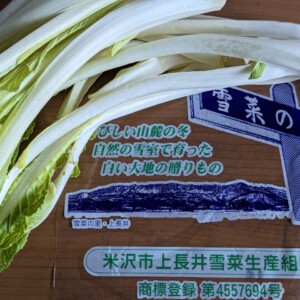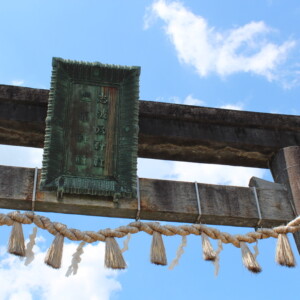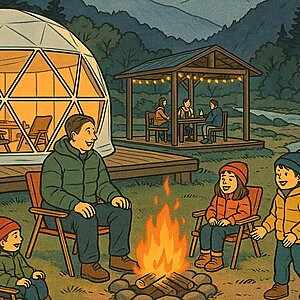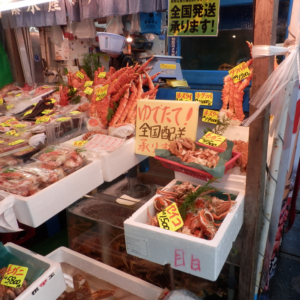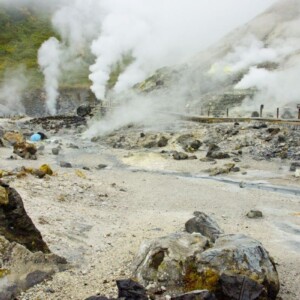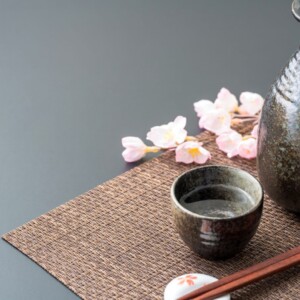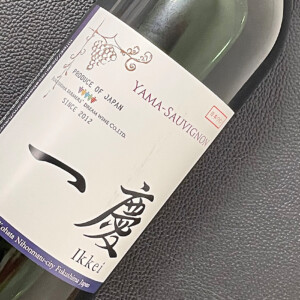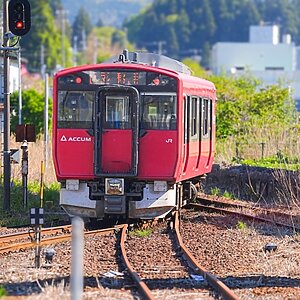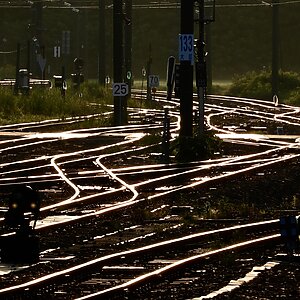
Tateishi-ji Temple, a corner of the four temple corridors, including Chuson-ji Temple, Mokoshi-ji Temple, and Zuigan-ji Temple [Yamagata Prefecture]
table of contents
- 1 A corner of the four-temple corridor founded by Jikaku Daishi Ennin
- 2 Access by car or train
- 3 Highlights of the approach to the shrine
- 3.1 Nemotochudo
- 3.2 Statues of Matsuo Basho and his disciple Kawai Sora, donated by a family of a famous Yamagata company
- 3.3 Chikara konnyaku, a Yamadera specialty near the temple gate
- 3.4 "The quietness of the cicadas' voices penetrating the rocks" Semizuka
- 3.5 Niomon Gate, the midpoint of the approach to the shrine
- 3.6 The Godaido Hall, a spectacular view spot at Risshakuji Temple
- 3.7 Okunoin, the end point of the mountain path
- 3.8 Hidden spot: Urayamaji Temple (Minenoura)
- 4 summary
Risshakuji Temple on Mount Hoju in Yamagata Prefecture , commonly known as Yamadera , is a Tendai Buddhist temple said to have been founded by Ennin in 860 at the request of Emperor Seiwa
The principal image of the mountain is Yakushi Nyorai, and as the entire mountain is said to be a temple, you have to climb 1,050 steps from the trailhead to the final point, Nyohodo (Okunoin) . Normally, just looking at these steps would leave you out of breath, but strangely, these steps at Yamadera Temple give you the strength to climb.
It was designated as a national historic site and place of scenic beauty on March 25, 1932 (Showa 7)
A corner of the four-temple corridor founded by Jikaku Daishi Ennin
It is designated as Zao National Park (Type 2 Special Area) and forms part of the "Four Temple Corridor" that goes around Risshakuji Temple (Yamagata Prefecture), Chusonji Temple (Iwate Prefecture), Motsuji Temple (Iwate Prefecture), and Zuiganji Temple (Miyagi Prefecture), all of which were founded by Jikaku Daishi Ennin
The Four Temple Corridor is famous for being the pilgrimage made by the haiku poet Matsuo Basho in the 17th century, and the travelogue that includes this pilgrimage is one of Japan's most famous, "Oku no Hosomichi .
Link: Michinoku Ancient Temple Pilgrimage “Four Temple Corridors”
Additionally, it is counted as one of the three temples that make up the "Dewa Famous Temple Pilgrimage,"
Access by car or train
Access to Risshakuji Temple is generally by car or train
Parking is generally paid, but there are multiple parking lots so you shouldn't have any trouble finding one. The average price is 500 yen per day
If you are traveling by train, it is about 20 minutes from Yamagata Station on the JR Senzan Line, and about 1 hour and 15 minutes from Sendai Station on the local train
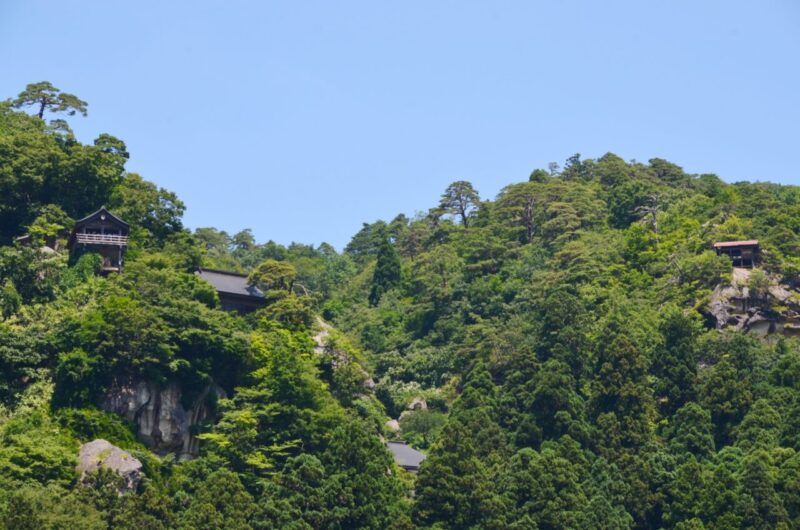
The entrance to the shrine is about a 5-7 minute walk from Yamadera Station on the JR Senzan Line, and you won't get lost as you can see the temple perched on the mountain as soon as you get off the station
Highlights of the approach to the shrine
There are many sights to see along the mountain path leading to Okunoin at the summit. We will introduce some of them here
Nemotochudo
As you step into the trailhead, the main hall, Konponchudo, will come into view directly ahead. Designated an Important Cultural Property, the hall houses the principal image of worship, a wooden seated statue of Yakushi Nyorai
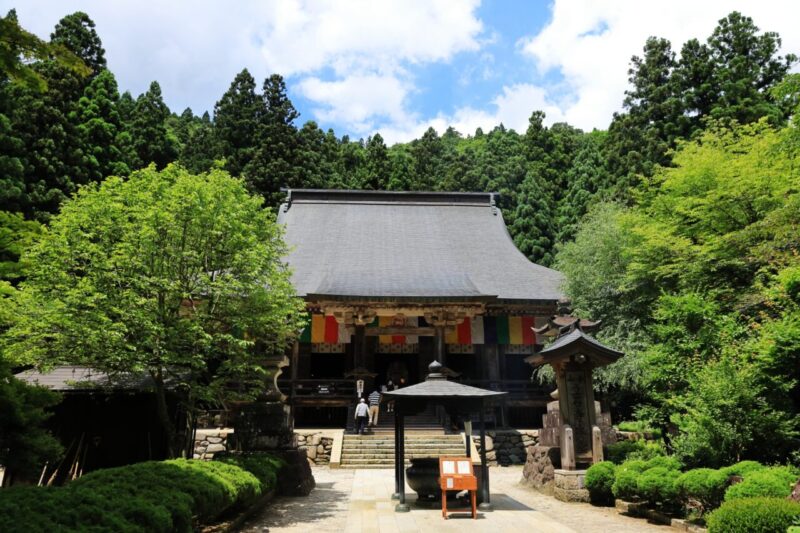
There is also a Buddhist lamp in the Konponchudo hall, and the flame that burns there is said to have been shared from Enryaku-ji Temple and has never been extinguished since the temple was founded. There is also an anecdote that when Enryaku-ji Temple's lamp went out due to an attack by Oda Nobunaga, the fire was shared from Risshaku-ji Temple instead
Statues of Matsuo Basho and his disciple Kawai Sora, donated by a family of a famous Yamagata company
A little to the west of the Honpo-do Hall, near the Nenbutsudo Hall, there are statues of Matsuo Basho and Kawai Sora , his disciple who accompanied him on his journey
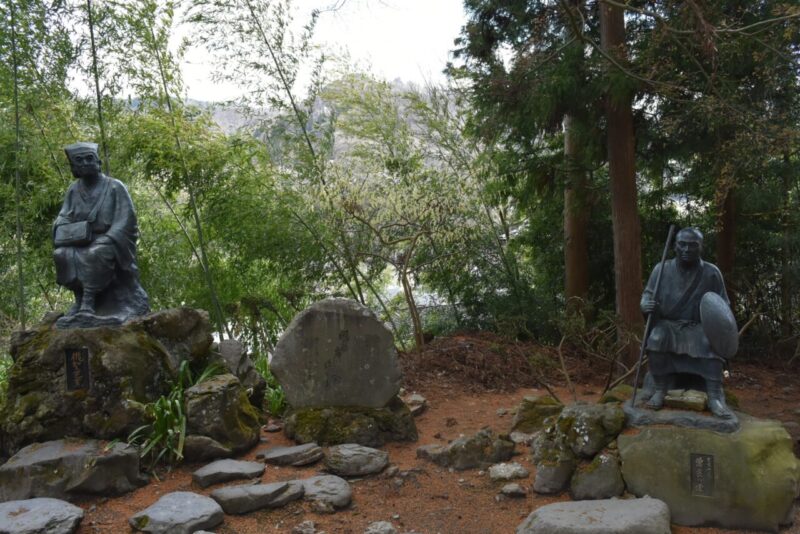
were donated by Denroku and Denshiro Suzuki of "Denroku," a famous company based in Yamagata that manufactures and sells bean snacks
Chikara konnyaku, a Yamadera specialty near the temple gate
After climbing for a while, you will reach the temple gate, where you will find the famous Chikara Konnyaku , sold in large pots.
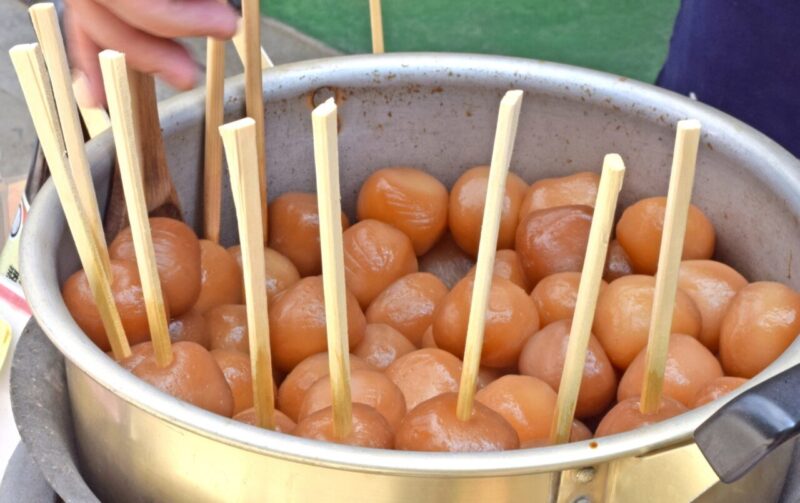
There are three balls of konnyaku on a skewer, and the soy sauce gives it a comforting taste that reminds you of your mother's cooking in the countryside. It's a great way to soothe the fatigue of mountain climbing, so many tourists stop here to take a break
"The quietness of the cicadas' voices penetrating the rocks" Semizuka
After taking a breather and continuing up the mountain, you will come to Semizuka, the place where Matsuo Basho wrote his famous haiku
Basho, who was traveling, wrote the famous haiku at Risshakuji Temple : "The silence of the cicadas' voices seeping into the rocks ." This place is said to be the spot where he buried a piece of paper with the haiku written on it on May 27, 1689 (July 13, 1689), and erected a stone mound.
Perhaps as a result of this influence, the "Yamadera Cicadas" the "Top 100 Soundscapes of Japan" by the Ministry of the Environment , and the area around this semi-zuka is said to be the best spot to hear the cicadas' sounds.
Niomon Gate, the midpoint of the approach to the shrine
The gate was rebuilt in 1848 (Kaei 1) and has a gabled roof covered with copper sheets

There are two Nio statues on either side of the gate, which are said to have been created by disciples of Unkei,
The Godaido Hall, a spectacular view spot at Risshakuji Temple
Here, we take a slight detour to the left, where there is a road leading off. At the end of the road are the Kaisan-do and Nokyo-do halls, and the scenery around here is often photographed as a mountain temple landscape
The remains of Jikaku Daishi Ennin are said to be buried in a cave below the cliff of the Kaisan-do Hall . The small red hall is a sutra hall where sutras are copied, and is said to be the oldest building in the temple grounds.
There is a path that continues further in, and if you go up that path you will come across the spectacular view spot, Godaido .
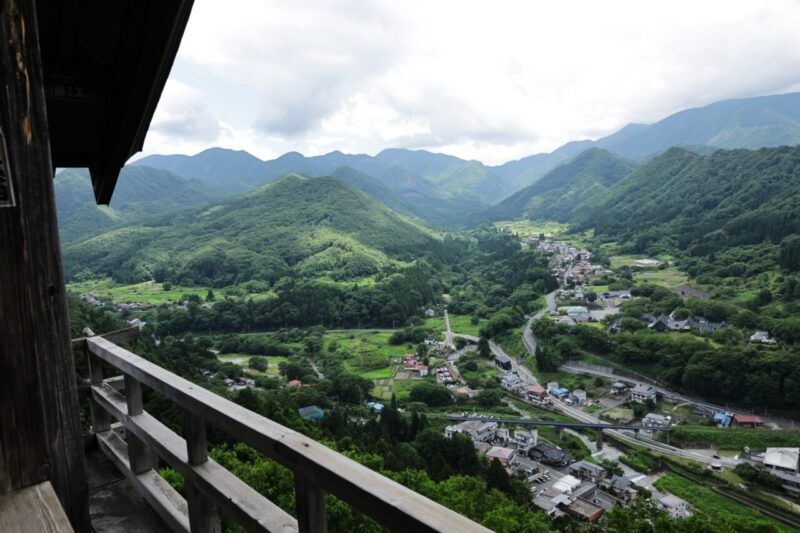
It's like an open observation space, with a magnificent panoramic view unfolding before your eyes. If you come in spring, you can have the rare experience of looking down at the cherry blossoms. Looking down, you can't help but think, "I've climbed so far."
Okunoin, the end point of the mountain path
After the detour, return to the approach and continue climbing to finally reach , Okunoin
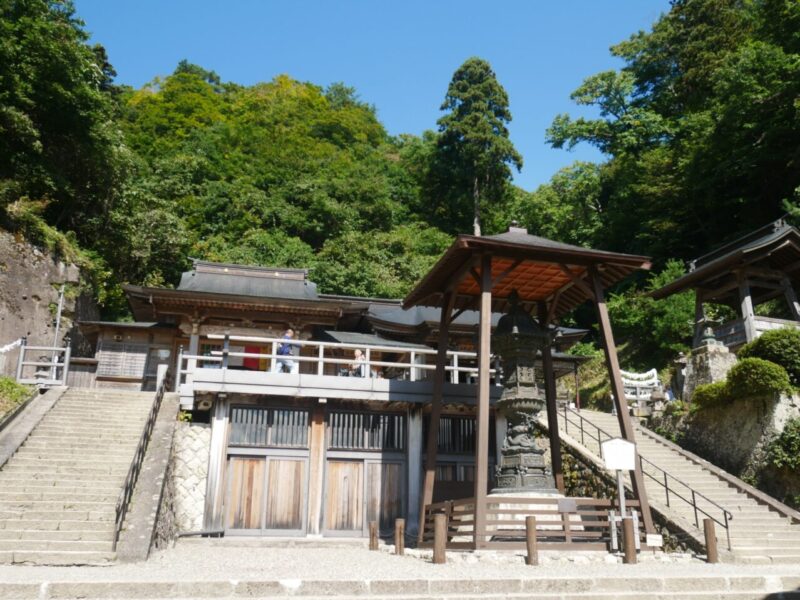
The official name of Okunoin is Nyohodo Hall, and it is a dojo for copying sutras using ink brushes that was rebuilt in 1872. The principal images enshrined here are Shaka Nyorai and Taho Nyorai, which are said to have been carried by Jikaku Daishi Ennin during his training in China. The old hall on the right is Nyohodo Hall, and the Great Buddha Hall on the left houses a 5-meter-tall golden statue of Amida Nyorai .
Hidden spot: Urayamaji Temple (Minenoura)
If you pass the trailhead to Yamadera Temple and head further east, you'll come to the so-called "Urayama-dera," . Officially known "Mine-no-ura ," the area is dotted with hidden tourist spots, including the Senjuin Kannon Temple, the Tarumi ruins, the remains of the Shugenjo (mountain training ground), and Eboshi Rock.
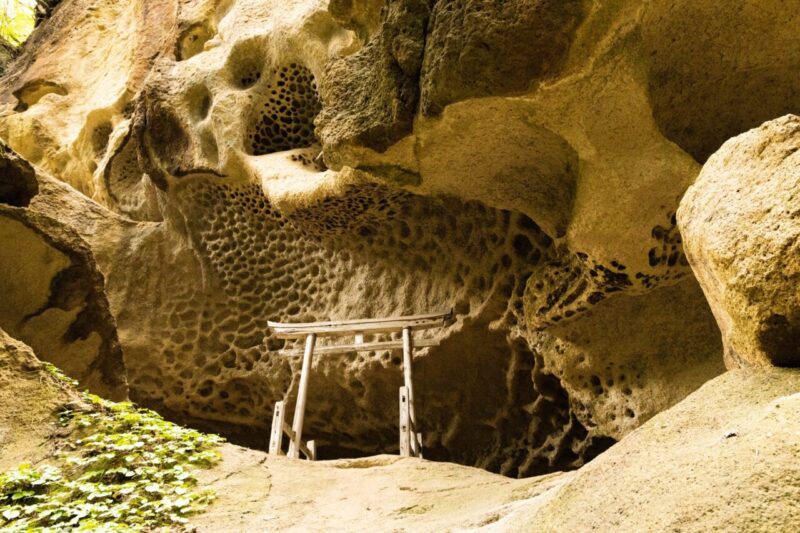
The main attraction is the Tarumi Ruins, a rocky area with honeycomb-shaped holes formed by the erosion of tuff
Further inside "Ennin-shuku Ruins ," where the aforementioned Jikaku Daishi Ennin is said to have conceived the idea for Yamadera Temple. Due to its appearance, it has been spreading around on social media in recent years, attracting an increasing number of tourists. It is a hidden tourist spot in Yamadera with a mysterious atmosphere.
However, this is a fully-fledged mountain trail, so you will need to bring some preparations, such as comfortable walking shoes
summary
In addition to Risshakuji Temple, there are four other temples along the mountain path called Shosoin, Konjoin, Chuseiin, and Kazoin. While climbing the 1,050 steps, you can enjoy history, nature, spectacular views, the delicious taste of chikara konnyaku, and the sense of accomplishment at the top - it's hard to find a spot where you can experience so many things all at once. This is a tourist spot that you definitely want to stop by when you visit Yamagata Prefecture
Risshakuji Temple <Information>
- Name: Mt. Hoju Risshakuji Temple
- Address: 4456-1 Yamadera, Yamagata City, Yamagata Prefecture 999-3301
- Phone number: 023-695-2002
- Official URL: http://www.rissyakuji.jp/


![[Iwate Prefecture] That person might have gone too! ? 5 recommended power spots in Iwate Prefecture 26634518_m](https://jp.neft.asia/wp-content/uploads/2023/06/26634518_m-150x150.jpg)
![[Iwate Prefecture] Chusonji, a world heritage site famous as the temple of the third generation of the Oshu Fujiwara clan Chusonji Temple](https://jp.neft.asia/wp-content/uploads/2016/09/tyusonji-150x150.jpg)
![[JR East Pass Trip: Part 2 of Day 2] After seeing Mokoshiji Temple, the remains of the soldiers' dreams, we returned to Sendai temporarily! Pure Land Garden at Mokoshiji Temple](https://jp.neft.asia/wp-content/uploads/2022/12/IMG_3853-1200x675-1-150x150.jpg)
![What is Ennen, a precious performing art that only a few remain today? | Motsuji Temple's Ennen Dance [Iwate Prefecture] Dance of Ennen "Young Woman and Priest"](https://jp.neft.asia/wp-content/uploads/2025/11/DSC_2037-150x150.jpg)
![[JR East Pass Trip: Day 2 Part 2] Intensive exploration of Hiraizumi! World Heritage Sites: Chusonji Temple and Kinjido Chusonji Temple Information Board](https://jp.neft.asia/wp-content/uploads/2022/12/IMG_3829-1200x675-1-150x150.jpg)
![Mokoshiji Temple, the world heritage site with Japan's oldest garden, the Jodo Garden [Iwate Prefecture] Motsuji Temple (entrance)](https://jp.neft.asia/wp-content/uploads/2016/10/IMG_3844-150x150.jpg)
![[Series: Tracing the narrow path of the depths ④] Arriving at Hiraizumi, the Pure Land of the three generations of Fujiwara Basho, a dream of Basho Oku no Hosomichi 4](https://jp.neft.asia/wp-content/uploads/2023/09/addf9e31ea8b62f6903d5ad9db53d39e-1-150x150.jpg)
